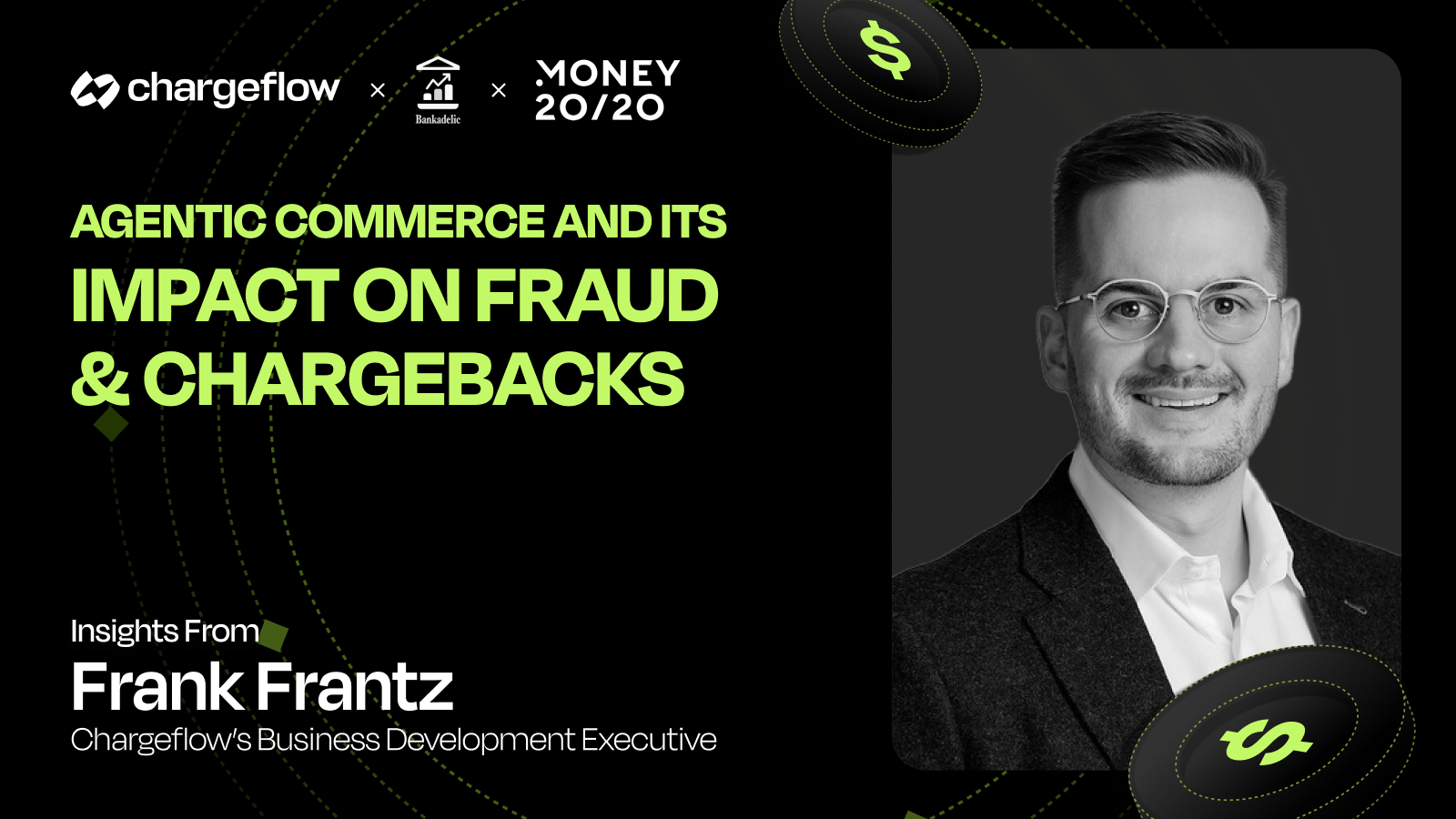Unveiling Clean Fraud: Protect Your Profits from Sophisticated Thieves

Chargebacks?
No longer your problem.
Recover 4x more chargebacks and prevent up to 90% of incoming ones, powered by AI and a global network of 15,000 merchants.
Protect your profits from fraudsters with Clean Fraud's powerful solutions. Safeguard your business and stop fraudulent activities in their tracks!
As a merchant in today's fast-paced digital world, protecting your hard-earned profits is paramount. However, lurking in the shadows of the e-commerce realm is a sophisticated enemy known as clean fraud. This deceptive threat poses a significant risk to your business, silently stealing your revenues while leaving a few traces behind.
Unlike traditional fraud schemes, clean fraud operates under the radar, making it exceptionally challenging to detect. Its ability to mimic genuine customer behavior and exploit vulnerabilities in the e-commerce ecosystem can leave even the most vigilant merchants vulnerable. But fear not, for in this article, we will shed light on this perilous threat and equip you with the knowledge and strategies to safeguard your profits.
We will explore the sophisticated techniques employed by fraudsters, exposing the elusive nature of their tactics. By understanding the challenges faced in detecting clean fraud, we can grasp the importance of staying one step ahead in the battle against these digital thieves.
Armed with this understanding, we will then delve into strategies designed to combat clean fraud head-on. From strengthening your security measures to leveraging advanced fraud detection solutions, we will explore practical steps you can take to fortify your defenses.
Join us on this journey as we unveil the secrets of clean fraud and empower you with the tools and knowledge to outsmart these sophisticated thieves. Your business's success and longevity depend on it.
What is Clean Fraud?
Clean Fraud, an insidious form of online deception, has emerged as a formidable threat to businesses across the globe. As a merchant, you must understand the nature of this sophisticated scheme to protect your profits and reputation.
Clean Fraud is a type of fraudulent activity that cunningly disguises itself, making it extremely difficult to detect. Unlike traditional fraud, which often involves obvious red flags, clean fraud operates under the radar, making it a covert menace.
These fraudulent activities are perpetrated by individuals who possess intricate knowledge of the e-commerce ecosystem and exploit its vulnerabilities for their gain.
Types of Clean Fraud
Clean Fraud encompasses various tactics used by fraudsters to deceive merchants. Here are some common types:
1. Account Takeover Fraud
Fraudsters gain unauthorized access to customer accounts and exploit them for financial gain.
2. Friendly Fraud
Customers make purchases but later claim that the transaction was unauthorized or that they did not receive the product or service, resulting in chargebacks.
3. Triangulation Fraud
Fraudsters set up fake online storefronts and use stolen payment information to make purchases, leaving legitimate cardholders as victims.
4. Digital Product Fraud
Fraudsters exploit the digital goods market by selling fake or stolen products, such as software licenses or digital downloads.
5. Affiliate Fraud
Fraudsters manipulate affiliate marketing programs by generating fake clicks or sales to earn commissions.
The Sophistication Behind Clean Fraud
As a merchant operating in today's digital landscape, you face numerous challenges in safeguarding your profits. One of the most insidious threats you need to be aware of is clean fraud. But what exactly makes clean fraud so difficult to detect?
Let's dive into the sophisticated tactics employed by these elusive thieves and gain a deeper understanding of this menace.
Exploiting Vulnerabilities in the E-commerce Ecosystem
Clean fraudsters are masters of deception, using advanced techniques to mask their true intentions. They exploit vulnerabilities in the e-commerce ecosystem, taking advantage of weak authentication systems, inadequate transaction monitoring, and insufficient fraud detection tools. Their goal is simple: to appear like legitimate customers while siphoning off your hard-earned profits.
Elusive Techniques and Tactics
These crafty criminals employ a wide array of tactics that keep them one step ahead of traditional fraud detection methods. They utilize advanced identity spoofing techniques, steal payment credentials, and deploy automated bots and scripts to mimic genuine customer behavior.
Moreover, they cleverly obfuscate their geographic location, making it challenging to trace their origins.
Concealed Footprints: A Needle in a Haystack
Detecting clean fraud becomes even more challenging due to the concealed footprints left behind. These fraudsters strategically time and pace their activities to mimic normal customer behavior.
They employ multiple devices and IP addresses, leaving limited anomalies in transaction data for fraud detection systems to flag. It's like searching for a needle in a haystack.
Limitations of Traditional Fraud Detection Methods
Unfortunately, traditional fraud detection methods often fall short when combating clean fraud. Rule-based systems have their limitations, as they struggle to keep up with the evolving tactics employed by these sophisticated criminals.
Manual review processes are time-consuming and prone to human error. To effectively tackle clean fraud, you need a more robust solution.
Detection Challenges
One of the primary difficulties in detecting clean fraud lies in the ability of fraudsters to mask their activities as legitimate customer behavior. These cunning thieves strategically mimic genuine transactions, making it arduous to discern the fraudulent ones.
Clean fraudsters meticulously pace their actions, timing them strategically to avoid suspicion, further complicating the detection process.
Moreover, fraudsters employ a range of techniques to obscure their tracks. They utilize multiple devices and IP addresses, making it challenging to identify the origin of fraudulent activities. In addition, the limited anomalies in transaction data associated with clean fraud make it harder to distinguish fraudulent transactions from legitimate ones.
These concealed footprints make it exceedingly difficult for merchants to differentiate between genuine customers and fraudulent actors.
While traditional fraud detection methods have been effective to a certain extent, they are ill-equipped to tackle the complexities of clean fraud. Rule-based systems, which rely on predefined patterns to flag suspicious transactions, often fail to adapt to the dynamic nature of clean fraud. Fraudsters constantly evolve their tactics, rendering rule-based systems outdated and ineffective.
Manual review processes, although well-intentioned, are time-consuming and prone to human error. They often lack the scalability required to handle large volumes of transactions efficiently. As clean fraud becomes more prevalent and sophisticated, merchants need a solution that can keep pace with the ever-changing landscape.
To overcome these challenges, merchants are turning to advanced fraud detection solutions empowered by cutting-edge technologies. Machine learning and artificial intelligence (AI) play a pivotal role in identifying patterns and anomalies, enabling the detection of clean fraud with higher accuracy.
By leveraging behavioral analysis and real-time transaction monitoring, these solutions provide proactive protection against clean fraud.
Collaborative fraud intelligence networks also aid in combating clean fraud. By pooling resources and sharing information among merchants, these networks establish a unified defense against fraudulent activities.
The collective knowledge and insights gained from such collaborations bolster the overall fraud detection capabilities and increase the chances of early detection and prevention.
Strategies to Combat Clean Fraud
By implementing effective strategies, you can safeguard your operations and keep these fraudsters at bay. Here are some powerful tactics to combat clean fraud from a merchant's perspective:
1. Multi-Factor Authentication
Implementing multi-factor authentication adds an extra layer of security by requiring customers to verify their identity through multiple means, such as passwords, SMS codes, or biometrics. This greatly reduces the risk of unauthorized access and deters clean fraudsters in their tracks.
2. Enhanced Encryption and Tokenization
By encrypting sensitive customer data and tokenizing payment information, you create a formidable barrier against clean fraud. Encryption ensures that even if fraudsters manage to intercept data, it remains unreadable and useless to them. Tokenization replaces actual payment information with unique tokens, rendering it useless if intercepted.
3. Geo-Location and Device Fingerprinting
Leveraging geo-location and device fingerprinting technologies enables you to identify anomalies in customer behavior. By analyzing IP addresses, geolocation data, and device characteristics, you can pinpoint potential fraudulent activities, such as transactions originating from unexpected locations or using unfamiliar devices.
4. Adaptive Authentication
Adaptive authentication solutions employ intelligent algorithms to assess the risk associated with each transaction. By considering various factors like customer behavior, device information, and transaction history, these systems can dynamically adjust security measures to match the level of risk. This ensures that genuine customers enjoy a seamless experience while thwarting clean fraudsters.
5. Real-Time Transaction Monitoring
Implementing real-time transaction monitoring allows you to scrutinize each transaction as it occurs. Advanced fraud detection systems can analyze various data points, including transaction amounts, patterns, and customer profiles, to identify suspicious behavior and flag potentially fraudulent transactions for further investigation.
6. Behavioral Analysis and Machine Learning
Leverage the power of machine learning and behavioral analysis to detect hidden patterns indicative of clean fraud. By continuously monitoring and analyzing customer behavior, these systems can identify anomalies and raise red flags, helping you stay ahead of fraudsters and protect your profits.
7. Collaborative Fraud Intelligence Networks
Joining forces with other merchants and sharing fraud-related information through collaborative fraud intelligence networks can provide valuable insights and early warnings. By learning from the experiences of others and leveraging collective knowledge, you can proactively combat clean fraud and enhance your defenses.
8. Continuous Improvement and Iterative Updates
Clean fraudsters are constantly evolving, so it's crucial to stay one step ahead. Regularly update your fraud prevention strategies, monitor emerging trends, and adapt your defenses accordingly. By staying vigilant and continuously improving your systems, you can effectively combat clean fraud and protect your business.
Consequences and Costs of Inaction
As a merchant, your business thrives on profits and customer trust. But what happens when you turn a blind eye to the looming threat of clean fraud? The consequences can be dire, both financially and reputationally. Allow me to shed light on the chilling costs of inaction, urging you to take proactive measures to protect your hard-earned profits.
First and foremost, let's talk about the financial implications. Clean fraud can lead to substantial revenue losses, eating away at your bottom line. Every fraudulent transaction that goes undetected means your profits are slipping through the cracks.
Your balance sheets suffer, and your growth potential is stifled. It's like watching your money disappear into thin air while your competitors flourish.
But the costs extend beyond immediate monetary losses. Your brand's reputation is at stake. Picture this: word gets out that your business is an easy target for clean fraudsters. Customers start questioning the security of their transactions and the safety of their personal information.
Trust, once shattered, is not easily rebuilt. You risk losing valuable clientele who seek reassurance elsewhere, damaging customer loyalty and the longevity of your business.
Moreover, the domino effect of inaction can have far-reaching consequences. Your market share dwindles as your competitors who have taken decisive action against clean fraud capitalize on the opportunity.
Customers flock to merchants who prioritize their security and deliver peace of mind. Inaction puts you at a disadvantage in the fierce battleground of commerce, allowing others to steal your spotlight and erode your customer base.
Let's not forget the potential legal ramifications. Ignoring clean fraud can expose you to legal battles and compliance issues. Regulatory authorities take a dim view of negligence when it comes to safeguarding customer data and preventing fraudulent activities.
Fines, lawsuits, and damaged relationships with payment processors can further drain your resources and hinder your business growth.
Inaction is a dangerous game to play. By turning a blind eye to the threat of clean fraud, you not only jeopardize your profits but also compromise the trust of your customers, market standing, and legal compliance.
Protect Your Store From Friendly & Chargeback Fraud with Chargeflow
Chargeback fraud is a growing problem for eCommerce merchants. In 2022, merchants lost an estimated $29 billion to chargebacks, and friendly fraud accounted for a significant portion of those losses.
Friendly fraud occurs when a customer disputes a legitimate charge, often because they have buyer's remorse or they are trying to get a free product. This type of fraud can be difficult to prevent, but there are steps you can take to protect your store.
One way to protect your store from friendly fraud is to use a chargeback management solution like Chargeflow. Chargeflow uses machine learning and artificial intelligence to generate the most comprehensive chargeback evidence in the world, custom-tailored to your store. This evidence can help you win more chargeback disputes and reduce your losses.
In addition to providing comprehensive chargeback evidence, Chargeflow also offers several other features that can help you protect your store from friendly fraud. These features include:
- Automated chargeback management: Chargeflow takes care of the entire chargeback process for you, from dispute notification to evidence submission. This frees up your time so you can focus on running your business.
- ChargeScore®: ChargeScore® is a proprietary algorithm that uses historical data to predict the likelihood of a chargeback being successful. This information can help you prioritize your time and resources when responding to chargebacks.
If you're serious about protecting your store from friendly fraud, then Chargeflow is a valuable tool. It can help you win more chargeback disputes, reduce your losses, and free up your time so you can focus on running your business.

Chargebacks?
No longer your problem.
Recover 4x more chargebacks and prevent up to 90% of incoming ones, powered by AI and a global network of 15,000 merchants.






























.png)








